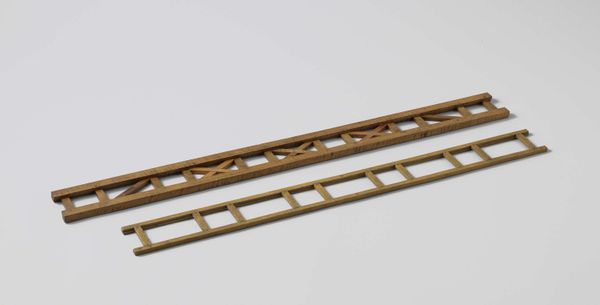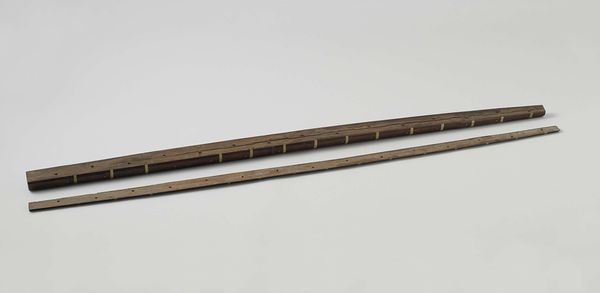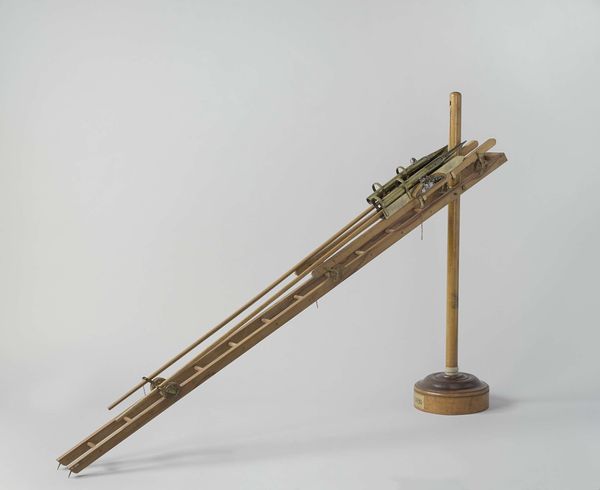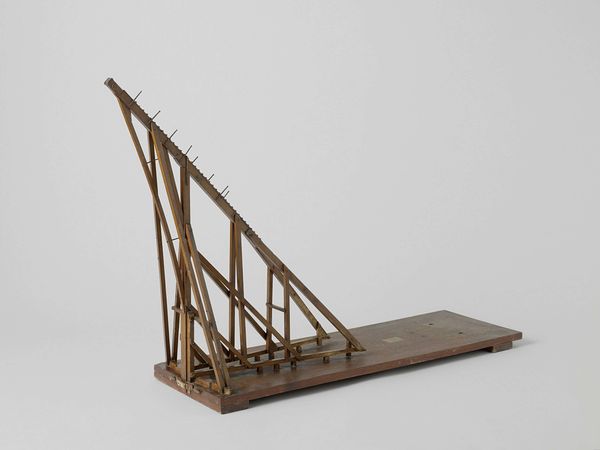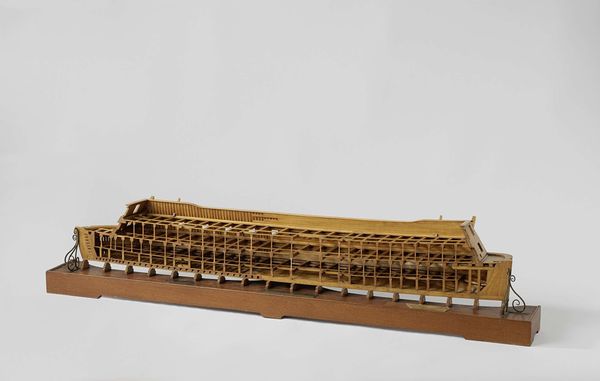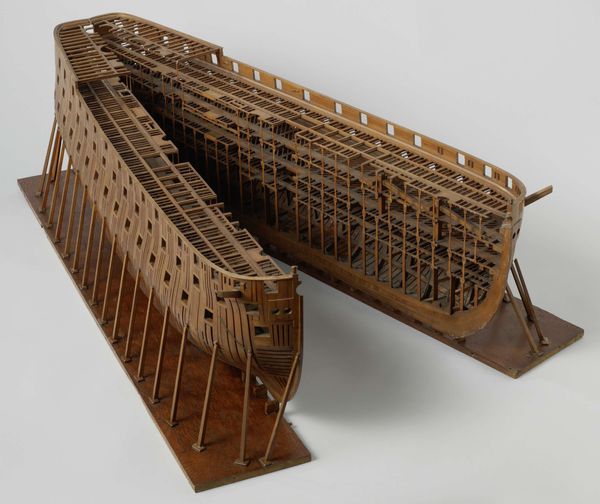
sculpture, wood
#
form
#
geometric
#
sculpture
#
abstraction
#
line
#
wood
#
modernism
Dimensions: (A) height 1.8 cm, (A) length 59.1 cm, (A) width 10.2 cm, (B) height 1.8 cm, (B) length 74.5 cm, (B) width 8.3 cm
Copyright: Rijks Museum: Open Domain
Curator: At first glance, I see such precision. This piece, “Two Models of Diagonal Framing,” dating to about 1822 and crafted by an anonymous artist, presents two nearly identical, geometric wood sculptures. Editor: My first impression is of fragility and tension. It looks as though one good push could send it all tumbling like dominoes. But also like scaffolding. Curator: It is striking how such an early work resonates with what we consider modernist sensibility. It has to do with an embrace of linearity and the way the artist treats geometrical form, a precursor, perhaps, to the later abstractions. Editor: Absolutely. Given that this model was crafted in the early 19th century, it’s worth asking about the purpose behind this piece, its role within broader social structures. My intuition sees both beauty and the rigid hand of design imposed upon organic forms. Curator: Well, let's think of diagonal lines. They don't conform to simple horizontal and vertical binaries. They convey motion, instability, something dynamic, really. Are they models of power? Editor: Or the denial of power! The wooden structures, rendered so precisely, bring to mind the radical re-envisioning that takes place within, say, utopian communities, and consider the architecture that helps enable that space. The repetition creates an interesting rhythm and might act as an effort of cohesion. The artist must know the inherent symbolism. Curator: Perhaps in the joining and repetition we find, encoded, a longing for progress and an almost desperate sense of control, the way we manage our lives or want to. There is a yearning here, don't you think? Editor: Definitely. It makes me wonder if the anonymity itself becomes a commentary on how we ascribe the very nature of control and design. How power rests in the concept itself more than with an individual? It is so relevant, really. Curator: Thinking about the artist choosing diagonal framing reminds me of our current framing. How does framing determine thought? Does this piece, then, serve as an ancestor to modern abstract works, that question of form as function? Editor: The exercise that is design asks us if there’s an inherent tension in imposing new order that may simply recycle prior forms and frameworks, even if unconsciously. I like how this object provokes so many related questions. Curator: I agree. We're able to witness form becoming both the function and the concept here. The work stays open while remaining contained.
Comments
No comments
Be the first to comment and join the conversation on the ultimate creative platform.
